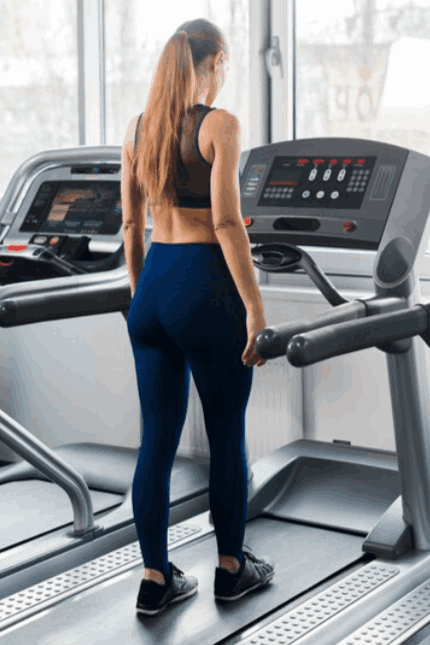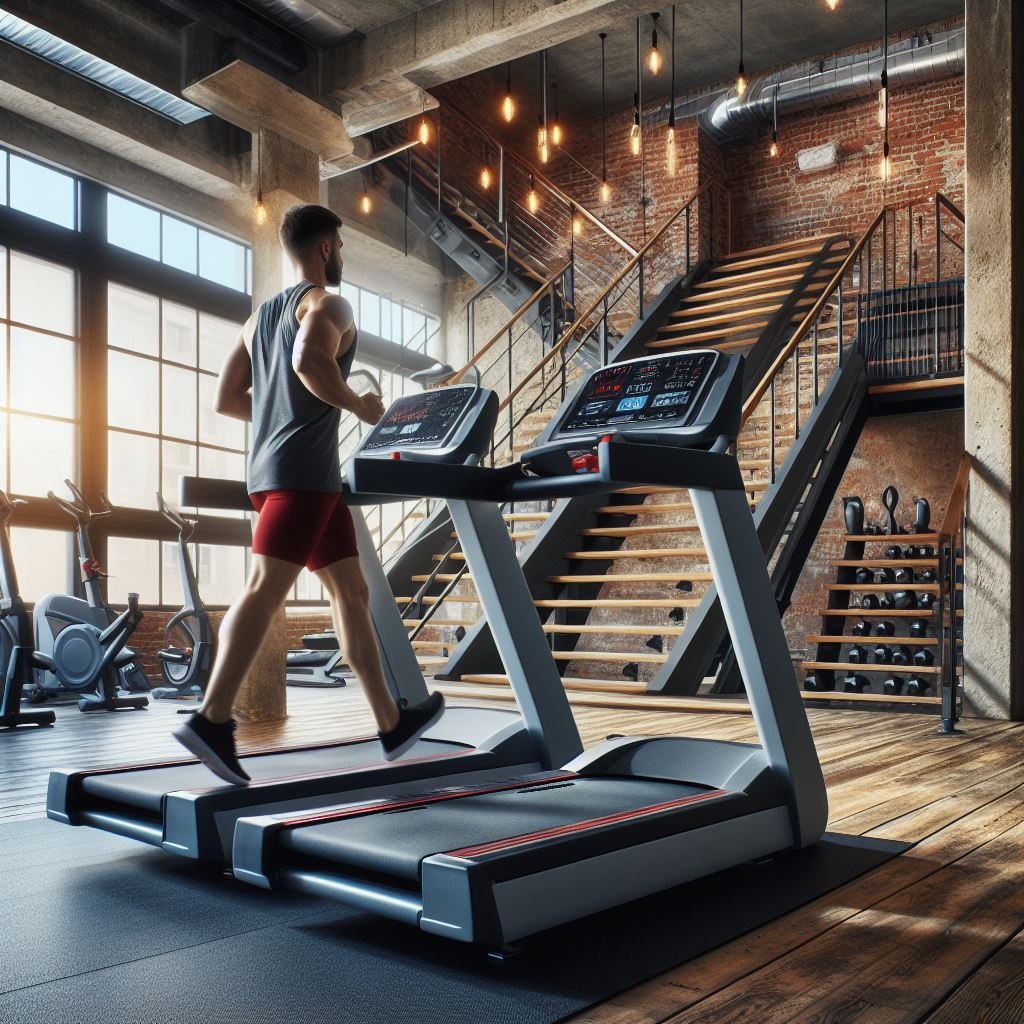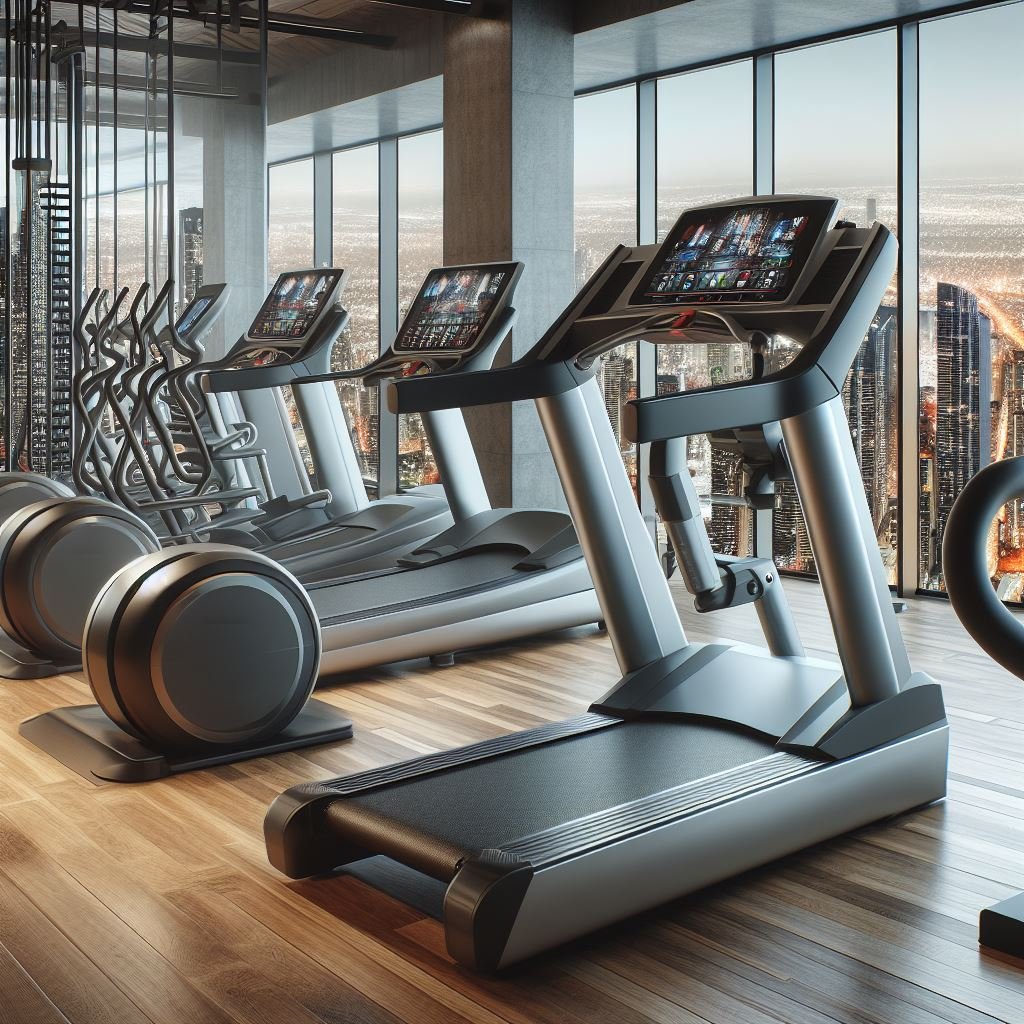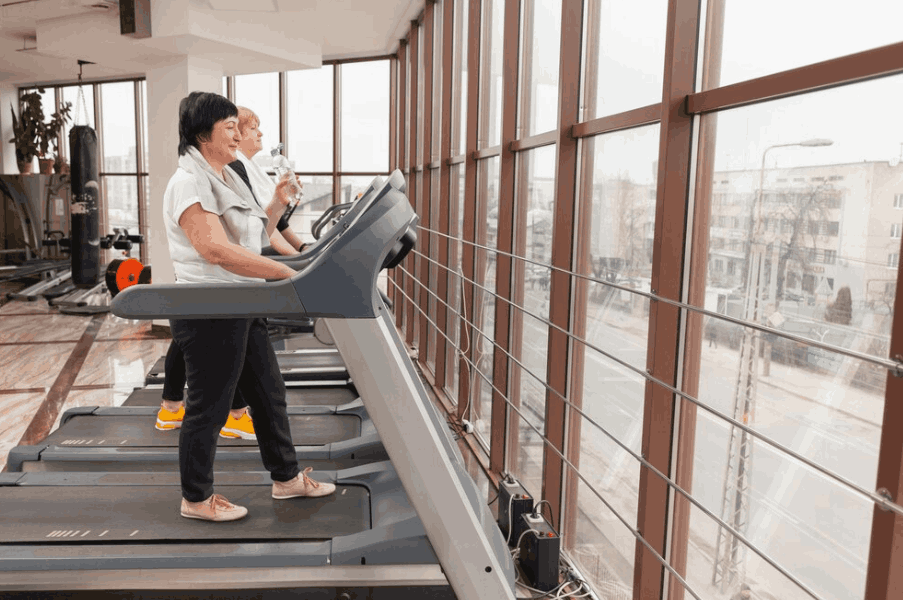StairMaster and Treadmill are two of the most widely used pieces of equipment in the fitness industry. Each machine has a dedicated following and has special advantages. Knowing the distinctions between these two machines can help you make an informed decision, regardless of your goals whether they are to strengthen your lower body, lose weight, or improve cardiovascular health.
Understanding the Machines

What is a StairMaster?
One kind of fitness equipment that mimics ascending stairs is the StairMaster. Since its introduction in the 1980s, it has become a global standard in gyms. The equipment usually consists of a series of rotating pedals or steps that rotate continuously, simulating the motion of stair climbing without the need to descend and offering a continuous, strenuous workout.
What is a Treadmill?
A treadmill is a multipurpose running, jogging, or walking machine that can be used while stationary. It has a moving belt that users can run or walk against, driven by an electric motor. To accommodate users with varying fitness levels and objectives, treadmills offer multiple settings for modifying speed, incline, and occasionally even integrated exercise programs.
Benefits of Each Machine

Benefits of the StairMaster
- Cardiovascular Health: The StairMaster is a great cardiovascular exercise that strengthens the heart and enhances cardiovascular health in general.
- Calorie Burning: The strenuous nature of stair climbing allows the StairMaster to burn a large quantity of calories quickly.
- Strength in the Lower Body: It targets the muscles in the lower body, such as the quadriceps, hamstrings, calves, and glutes, with effectiveness.
- Low Impact: The StairMaster is an excellent alternative for anyone with joint difficulties because it is less taxing on the joints than high-impact exercises like running.
- Compact Size: Because many StairMaster versions are small, you can use them at home in settings that aren’t too big.
Benefits of the Treadmill
- Versatility: A treadmill has several speed and inclination settings, so you may do anything from a stroll to an intense run.
- Accessibility: Users of all fitness levels can use treadmills because they are simple to operate and don’t require any specialized knowledge or training.
- Weight Loss: Interval training combined with steady-state cardio is particularly beneficial for weight loss when it comes to treadmill workouts.
- Workout: Routines can be tailored to meet individual fitness goals with the use of programmable programs, which range from interval training to endurance training.
- Whole-Body Workout: Running on a treadmill works the upper and lower bodies as well as the core, making it a more all-encompassing workout.
Comparing Workouts

Which Provides a More Intense Workout?
Depending on how each machine is utilized, the intensity might change. Because climbing stairs constantly activates large muscle groups, using a StairMaster usually results in a more intensive workout. On the other hand, a treadmill may also produce intense workouts, particularly at greater speeds or with steeper inclines.
Which Burns More Calories?
The length and intensity of the exercise determine how many calories are burned. Because climbing stairs requires a lot of work, the StairMaster generally burns more calories in less time. But a treadmill on a steep slope or at a rapid pace can also burn a significant amount of calories.
Muscle Engagement
Which Muscles Are Worked on Each Machine?
StairMaster: This exercise machine focuses mostly on the lower body, specifically the quadriceps, hamstrings, and calves. For stability, it also works the core muscles.
The lower body, including the calves, quadriceps, hamstrings, and glutes, is primarily worked out on a treadmill. The core and, to a lesser extent, the upper body muscles are also worked out when jogging on a treadmill, especially when maintaining perfect form.
Impact on Physical Health
Cardiovascular and Mental Health Benefits
Both machines offer significant cardiovascular benefits. Regular use of either machine can improve heart health, increase lung capacity, and reduce the risk of cardiovascular diseases. Additionally, the endorphin release during exercise can enhance mental well-being, reducing stress and anxiety.
Lower-Body Strength and Mobility
- StairMaster: Excellent for building lower-body strength and improving mobility due to the repetitive stair-climbing motion.
- Treadmill: Running or walking on a treadmill can also improve lower-body strength and enhance joint mobility, especially when incorporating incline settings.
Pros and Cons
StairMaster Pros and Cons
Pros:
- High-intensity workout
- Significant calorie burn
- Effective lower-body strengthening
- Low-impact on joints
- Space-efficient design
Cons:
- Limited to lower-body workout
- Can be monotonous
- May not be suitable for people with certain knee or hip issues
- Treadmill Pros and Cons
Pros:
- Versatile and customizable workouts
- Suitable for all fitness levels
- Effective for weight loss and endurance training
- Can provide a full-body workout
- Programs for varied workouts
Cons:
- Higher impact on joints compared to StairMaster
- Larger footprint, requiring more space
- Can be noisy
Considerations for Different Users
Best for Beginners
- StairMaster: This exercise machine focuses mostly on the lower body, specifically the quadriceps, hamstrings, and calves. For stability, it also works the core muscles.
- The lower body: Including the calves, quadriceps, hamstrings, and glutes, is primarily worked out on a treadmill. The core and, to a lesser extent, the upper body muscles are also worked out when jogging on a treadmill, especially when maintaining perfect form.
Best for Specific Conditions
- Balance Issues: Treadmills with handrails provide better support for those with balance issues.
- Shin Splints: The low-impact nature of the StairMaster is gentler on the shins, making it a better choice for individuals prone to shin splints.
Weight Loss and Injury Risk
Is the StairMaster or Treadmill Better for Weight Loss?
Both machines can aid in weight loss. The StairMaster, with its intense calorie-burning potential, is excellent for shorter, high-intensity workouts. The treadmill, with its versatility, allows for longer sessions of moderate to high intensity, which can also be highly effective for weight loss.
Comparing Injury Risks
- StairMaster: Lower impact on joints reduces the risk of joint-related injuries but can still be strenuous on the knees.
- Treadmill: Higher impact can increase the risk of joint issues and running-related injuries like shin splints or stress fractures. Proper form and a gradual increase in intensity can mitigate these risks.
Conclusion
When deciding between a StairMaster and a treadmill, consider your individual fitness goals, preferences, and physical condition. The StairMaster is ideal for those seeking an intense, lower-body-focused workout with high-calorie burn and low joint impact. The treadmill, with its versatility, is suitable for all fitness levels and offers a wide range of workout options, from walking to high-intensity running. Ultimately, the best choice is the one that aligns with your personal fitness objectives and provides the most enjoyable and sustainable form of exercise.
